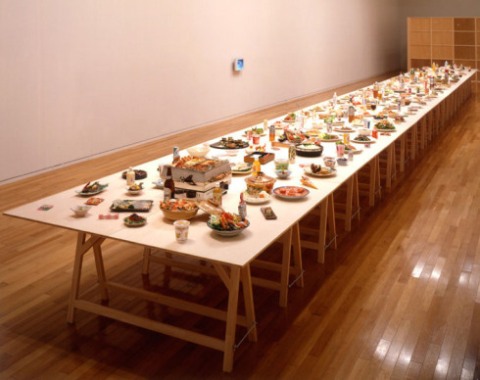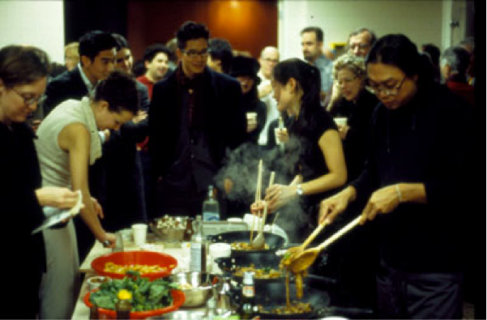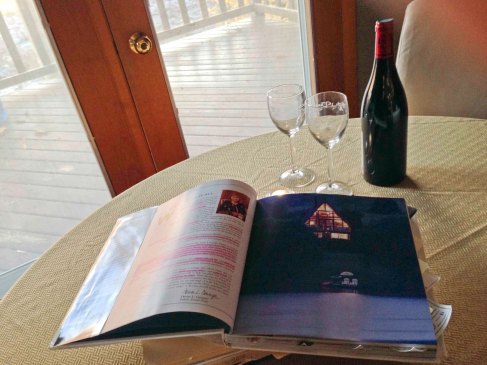According to Wikipedia relational aesthetics, or relational art, is “… a mode or tendency in fine art practice originally observed and highlighted by French art critic Nicolas Bourriaud. Bourriaud defined the approach as “a set of artistic practices which take as their theoretical and practical point of departure the whole of human relations and their social context, rather than an independent and private space.”
“The artist can be more accurately viewed as the “catalyst” in relational art, rather than being at the centre.”
One of the first attempts to analyze and categorize art from the 1990s, the idea of Relational Art was developed by Nicolas Bourriaud in 1998 in his book Esthétique relationnelle (Relational Aesthetics). The term was first used in 1996, in the catalogue for the exhibition Traffic curated by Bourriaud at CAPC musée d’art contemporain de Bordeaux. Traffic included the artists that Bourriaud would continue to refer to throughout the 1990s, such as Henry Bond, Vanessa Beecroft, Maurizio Cattelan, Dominique Gonzalez-Foerster, Liam Gillick, Christine Hil, Carsten Höller, Pierre Huyghe, Miltos Manetas, Philippe Parreno, Jorge Pardo and Rirkrit Tiravanija.”
So my understanding is that relational art is more about how viewers react to the art, or participate in the art, rather than, just observe the art.
As indicated in the photos below, “…probably the most famous practitioner, is Argentinean-born Thai artist Rikrit Tiravanija’s first untitled solo show at 303 Gallery, New York in 1992. During the length of that exhibition, Tiravanija cooked Thai food for visitors in a kitchen set up within the gallery. The food is the art, but not in the fine cuisine sense: “it is not what you see that is important but what takes place between people,” Tiravanija says. The communal experience of cooking and eating the food becomes the art.
In my Second Home-Finding Your Place in the Fun found book project, I choose to represent the concept of relational aesthetics by highlighting some of the text in the book that describes why the author choose her topic, and what it means to her and her family, to have a second home. I then placed the book, open to the highlighted text page, on a table facing a lakeside deck overlooking the water, next to a bottle of wine and some glasses. Now I’m just waiting for the guests to arrive so that the art can begin!



